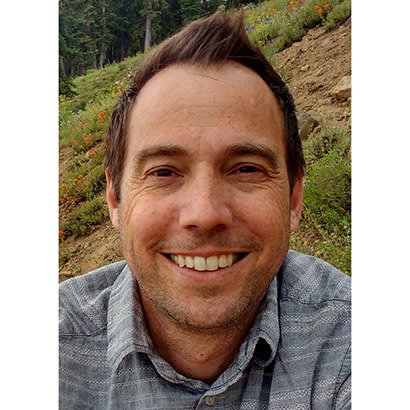
Those who truly appreciate the great outdoors likely remember the first time they visited a park. For Seth Hendler-Voss, some of his most treasured childhood memories involve spending time with family and friends while enjoying everything parks have to offer.
Parks & Recreation magazine recently connected with Hendler-Voss, director of parks, recreation and tourism for Prince William County, Virginia, to find out, among other things, why it’s important to design parks with conservation in mind. A portion of that conversation follows:
Parks & Recreation: What’s your first memory of spending time in a park?
Seth Hendler-Voss: My father took me and my brothers on a road trip out west to tour the national parks. I can still smell the back seat of the ’85 Chevy Suburban, but more so the sulfur pools of Yellowstone — which were mesmerizing. I also spent my weekends hiking through the New Jersey forests with my Boy Scout troop. My most memorable park experiences occurred at Tyler State Park in Pennsylvania, where I spent half of my high school days training with my cross country and track squad. Those wooded trails and rolling hayfields were the backdrop of my coming of age.
P&R: Your department manages more than 4,000 acres of parkland and over 100 miles of trails and blueways. What’s the most challenging part of what you do?
Hendler-Voss: Over the past 18 months, we consolidated the Convention and Visitors Bureau and the county’s Historic Preservation division into our service portfolio. From battlefield preservation and fitness centers, to waterparks and preschool, we have tremendous reach. Coming from the park design and operations side, I’ve had to learn a lot about programming. I’m ever thankful for the devoted and brilliant team of employees who save me from tripping up. The biggest challenge of the job is responding to everyone’s needs. The trick in this line of work, as recently described to me, is satisfying the dissatisfied without dissatisfying the satisfied. But, seeing the immediate impact of my work cancels out the hard days. I often tell people local government is the frontline of community building. In direct service provision, we’re forced to take action, so the learning comes quick.
P&R: How does conservation play a role in the design of your parks?
Hendler-Voss: Conservation plays an integral role. Prince William is the second-largest county in Virginia and one of the fastest growing. There is tension over development — especially related to low-density residential, which has shaped our community’s identity for the past half century. Our department is in the crosshairs, at times, like many other agencies, because building parks can disrupt the natural landscape. In a former community I served, someone spray-painted “parks and wreck” on a section of silt fence on a project site. That stuck with me and inspires me to be the best land steward possible. For active-use park development, we are introducing more native, low- maintenance landscapes, such as wildflower meadows. A 50 percent maximum disturbance guideline in certain areas of the county also ensures we provide a counterbalance of passive uses. For years, we’ve been known for our excellent sports fields — all 200 of them. Ten years from now, my goal is for us to be known for our conservation commitment. In fact, we are currently looking at adding 300+ acres to our open-space portfolio and planning for a new natural resource management branch.
P&R: Is there one particular park that you like the most? If so, why?
Hendler-Voss: My favorite park in Prince William County is Splashdown Water Park. Our department built it from the ground up when we were a Park Authority. It draws guests from Maryland, D.C. and even West Virginia. The facility and grounds are stunning and meticulously maintained, but my greatest pleasure is seeing my staff in action — buzzing around, making customers feel welcome. The park is also a job skills training ground for 325 youth. Our department is the largest employer of youth in the county and we take our role very seriously. Our nationally recognized aquatics manager came up through the lifeguard ranks, and I met one young man last summer who is entering the FBI. We’re proud to have played a part in their professional growth.
P&R: If you didn’t work in parks and recreation, what would you be doing instead?
Hendler-Voss: I had an amazing stint as a town manager in a small paper-mill town outside Asheville, N.C., for three years. If not directing a parks department, I would likely go back to city or county management or to a private design practice. I’m a licensed landscape architect. My advice to park and recreation professionals is never limit yourself. We are in the creation business — whether it be creating physical spaces, opportunity or experiences. As creative, customer-oriented people, our skills can translate to many sectors of local government. And, there are many governments that could benefit from a jolt of fresh ideas. Prince William is a great community and employer, so I plan on staying for the long haul.
Vitisia Paynich, Freelance Writer for Parks & Recreation magazine.

